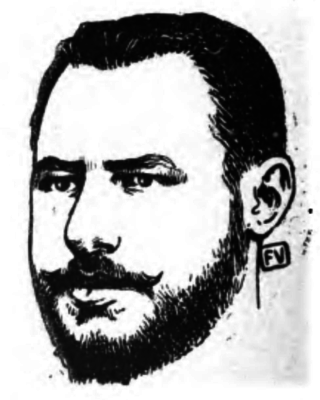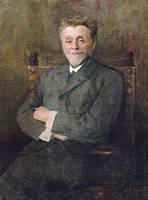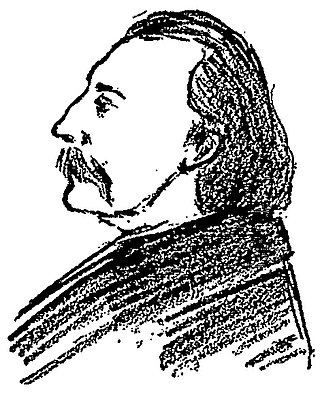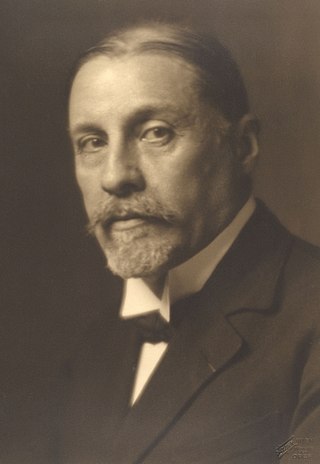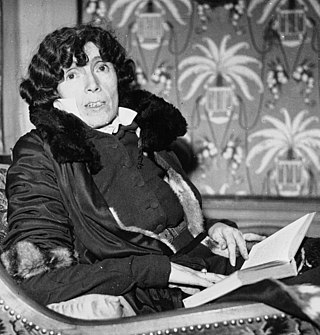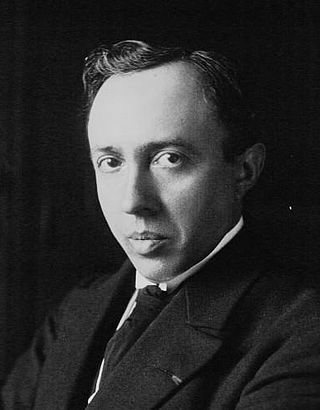Biography
Gabriel Mourey was born 23 September 1865 in Marseille, the son of Louis-Félix Mourey, a druggist, and Amélie-Madeleine Roche-Latilla. [1]
He began his career as a poet at the age of seventeen with the collection Voix éparses (1883) published in the Librairie des bibliophiles by Jules Rouam (Paris). [2] In March 1884, he launched Mireille, revue des poètes marseillais, with Raoul Russel, which had eight deliveries.
For the Parisian publisher Camille Dalou, he published his first translation from English, the Poésies complètes de Edgar Allan Poe (1889) with a preface by Joséphin Péladan; He subsequently translated poems by Algernon Charles Swinburne. From then on, the poet approached the symbolist trend and became friends with Claude Debussy, and met in Edmond Bailly's Librairie de l'art indépendant, the "master of the dream" Stéphane Mallarmé, of whom he attended the "Tuesdays of the Rue de Rome". [3] The following year, he published his first essay of art criticism, Les Arts de la vie et le règne de la laideur at Paul Ollendorff [ fr ], a rather reactionary essay that denounced impressionism, the realistic or naturalist drifts of painting, and which was more on the side of William Morris, the Pre-Raphaelite Brotherhood and John Ruskin, and in which he affirmed that "it is the spirit of anarchism that reigns in France in the artistic movement... a need for destruction, a sort of delirium that wants to abolish everything that exists." [4] Mourey was much more open during the following decades; he was commissioned by the Ministry of Fine Arts from 1895 onwards, and served as a link between the emerging English, Italian, Russian and Parisian decorative arts, and then saluted the advent of the Art Nouveau style. He wrote for catalogs of the Bing gallery and the Maison moderne, defended Albert Besnard, Felix Borchardt [ fr ], Auguste Rodin, Edmond Aman-Jean, Edgar Chahine, etc.
Basically, this versatile writer was a promoter in the hexagon of the Pre-Raphaelites and the Arts and Crafts movement. Erecting the latter as a model, with a tendency to idealize his supposed success, Mourey argued for an art with a social vocation [...]. As a number of his contemporaries, and as an art for all, his ideas found one of their extensions in 1904–1905 in the ephemeral magazine Les Arts de la vie, which he created and directed [at Larousse]. He thus evoked this "bankruptcy of modern decorative art" in France, for a production he considered to be elitist, not having been able to show a real agreement between artists and manufacturers, unlike, according to him, the English or German achievements. [5]
Between 1888 and 1905, he held a correspondence with Jean Lorrain [6] in which the two men sometimes showed an appalling cruelty to their contemporaries.
From 1891, he wanted to become a playwright with Lawn-tennis, a one-act play created at the Théâtre Antoine, and then in 1893 he wrote with Paul Adam Automne, a three-act drama, which was banned by censorship on 3 February, and which gave rise to a stormy session in the Chamber of Deputies on 6 March 1893 with the intervention of Maurice Barrès: The latter, deputy of Nancy, then opposed the interior minister Charles Dupuy, who asked to remove from the text everything that recalled the fusillade du Brûlé [ fr ] at La Ricamarie: in 1869, in the coalfield of Saint-Etienne, where the troops fired on the strikers.
With Armand Dayot he drew attention to the 18th-century English school of painting, then partly forgotten.
In 1900, he founded the Société nouvelle de peintres et de sculpteurs ("New Society of Painters and Sculptors") with French, German and English artists, which he presided until 1907; The Paris headquarters was located at Georges Petit's gallery. [1]
In 1913, he was made chevalier of the Légion d'honneur, under the patronage of Charles Plumet. [1]
After the war, he became inspector of national museums.
During his career as a critic, Gabriel Mourey wrote for many newspapers, such as Gil Blas , Le Journal (1911), The Studio , the Revue encyclopédique [ fr ], L'Illustration , the Revue de Paris ... He was chief editor of the Art & Décoration [ fr ] magazine. [1]
One of his most popular translations was The Book of Tea by Okakura Kakuzō.
Mourey died 10 February 1943 in Neuilly-sur-Seine.
Mourey and Debussy
Composed in 1913, as a short piece for solo flute after Psyché, [7] a dramatic poem in three acts by Gabriel Mourey, Syrinx , the fruit of this friendship, remains the only composition of Debussy that was completed in the framework of their many projects.
A contributor to the Revue wagnérienne, Mourey had many friends in common with Debussy and was the intermediary between him and Gabriele D’Annunzio for Le Martyre de saint Sébastien . Projects in cooperation with Debussy which never realised were: L’Embarquement pour ailleurs, commentaire symphonique, 1891; Histoire de Tristan, drame lyrique, [8] 1907–09 ; Huon de Bordeaux, 1909 ; Le Chat botté, d'après Jean de La Fontaine, 1909 ; Le Marchand de rêves , 1909.





